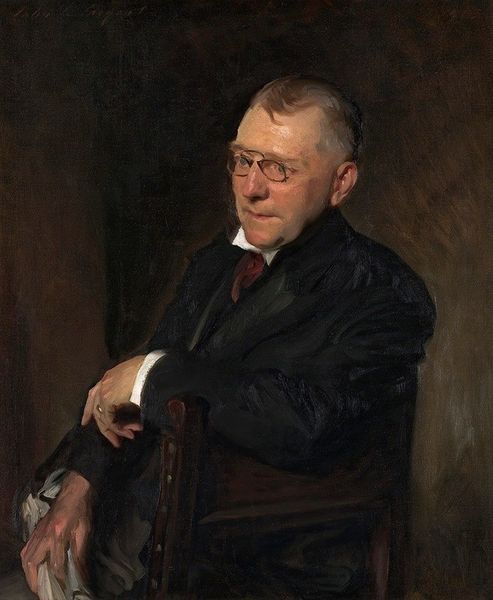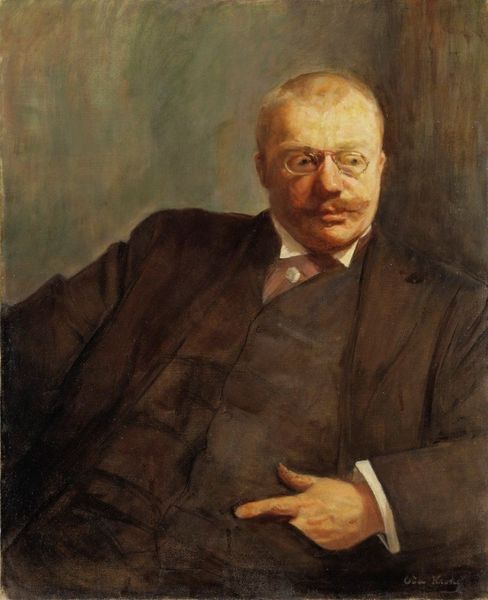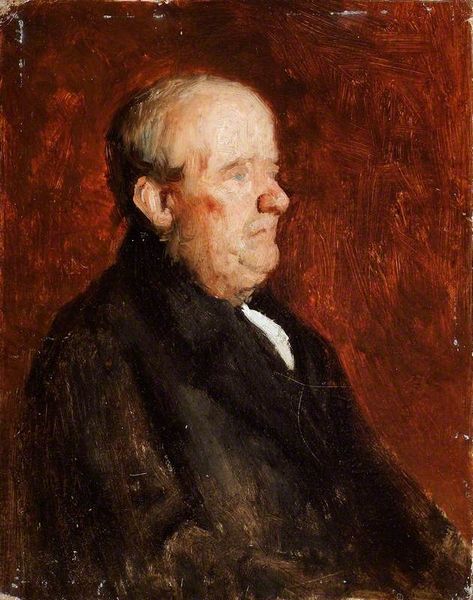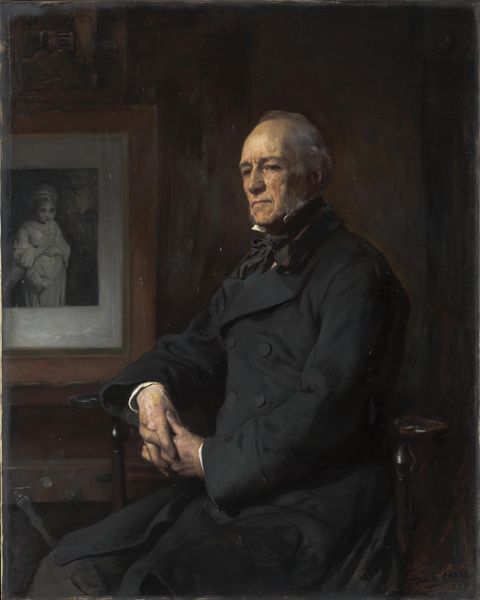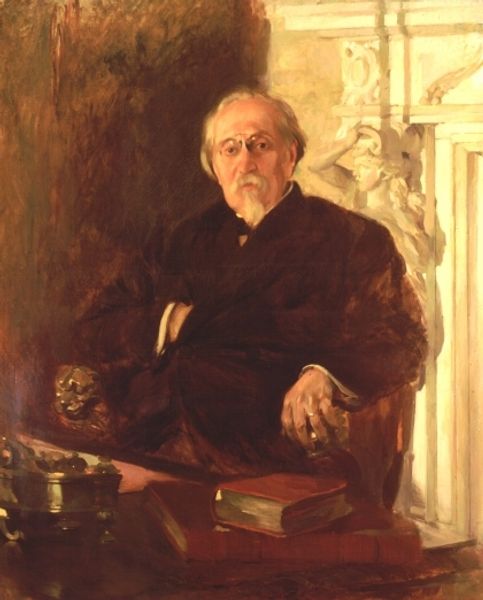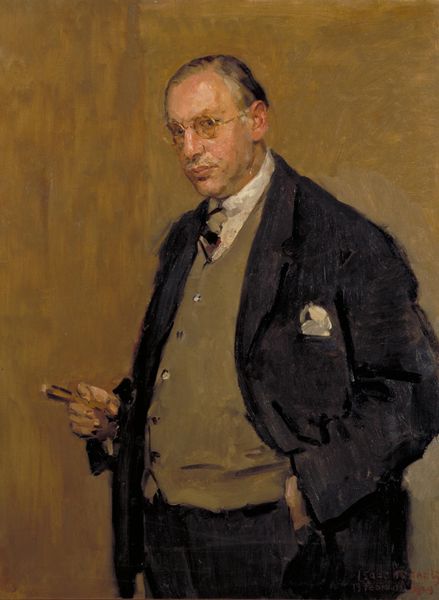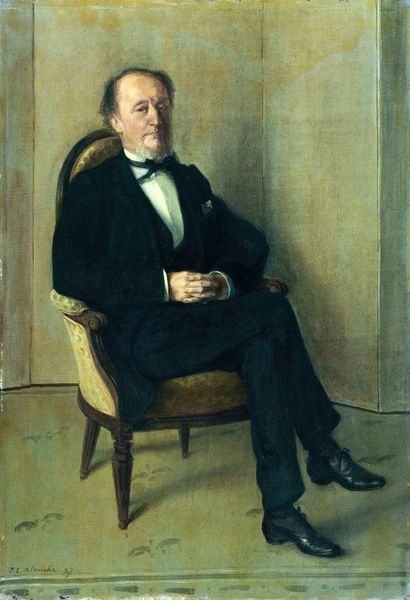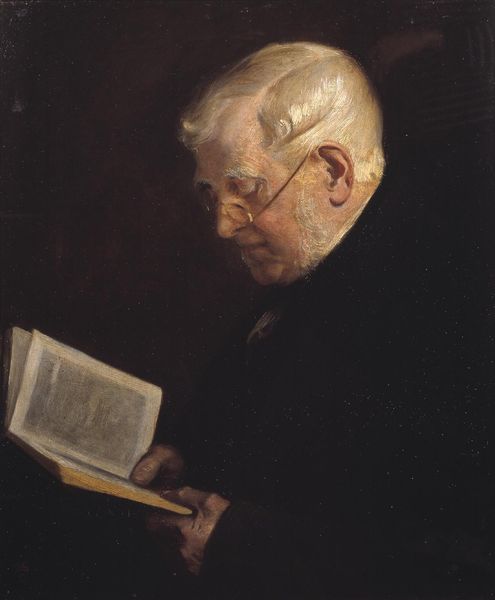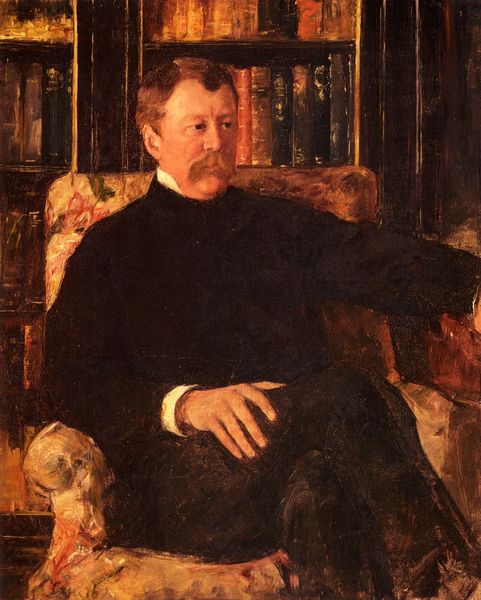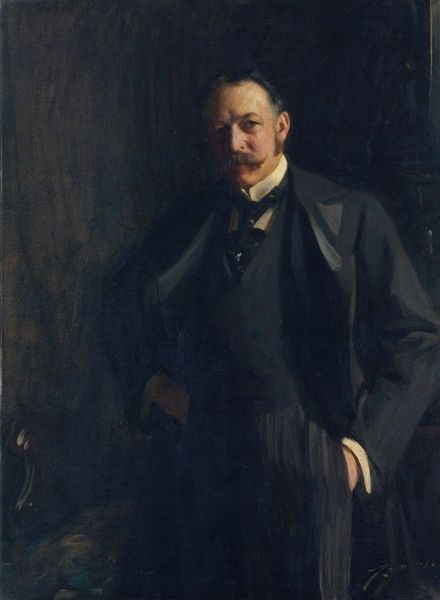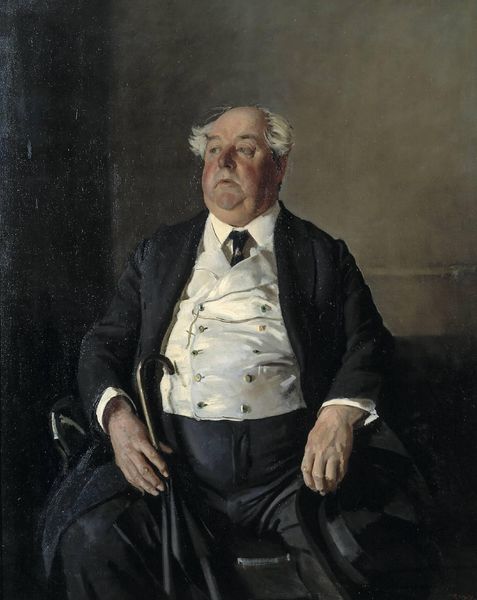
Dimensions: 90.2 x 77.5 cm
Copyright: Public domain
Curator: This is William Merritt Chase's "Portrait of James Whitcomb Riley," created in 1903. It presents Riley, the "Hoosier Poet," in a rather contemplative pose. Editor: Yes, and immediately the somber tones strike me. It’s very brown, isn’t it? Almost sepia, giving it this antique, weighty feel. It feels almost suffocating, despite the masterful brushwork. Curator: Considering Riley’s popular appeal at the time, particularly for his sentimental poems about rural life, this more serious portrayal feels like a deliberate act. Perhaps Chase sought to elevate Riley's image, situating him within a canon of intellectual and literary figures. There’s a tension here between popular sentimentality and artistic ambition. Editor: Or consider Chase's materials: Oil paint, heavily applied with impasto. That gives such texture. You can practically feel the labor, the sheer physicality of applying paint to canvas. How much were artists’ portraits work compared to poems or songs? Also note Riley's rather fine suit...there are signs of prosperity here that maybe contrasts to some of his pastoral verse. Curator: Exactly. How does Riley negotiate that space? It feels important to understand this image within turn-of-the-century debates around artistic labor, celebrity, and the commodification of culture. What does it mean to portray a "folk" poet in the trappings of wealth? Editor: He is clearly sitting with his best jacket, there is a conscious representation, and you perceive the materials, its quality, its labor and cost to represent prestige. Think about Chase's studio too—his teaching, his own brand of cultivated bohemianism—it’s all feeding into this carefully constructed image. How those circumstances produce a poet such as Riley as its representation in 1903! Curator: This reading suggests that Riley is consciously curating his public persona. It brings to mind similar strategies of self-fashioning by other literary figures of the era, particularly in relationship to class and the construction of a national identity. Editor: Exactly, so what is at stake, culturally, in representing his position? Curator: It shows this portrait acts less as a record of a specific individual than a point to study a complex network of aesthetic and economic negotiations in America. Editor: It all seems to reflect about what exactly goes into "representing" not only individuals, but social and historical backgrounds!
Comments
No comments
Be the first to comment and join the conversation on the ultimate creative platform.
